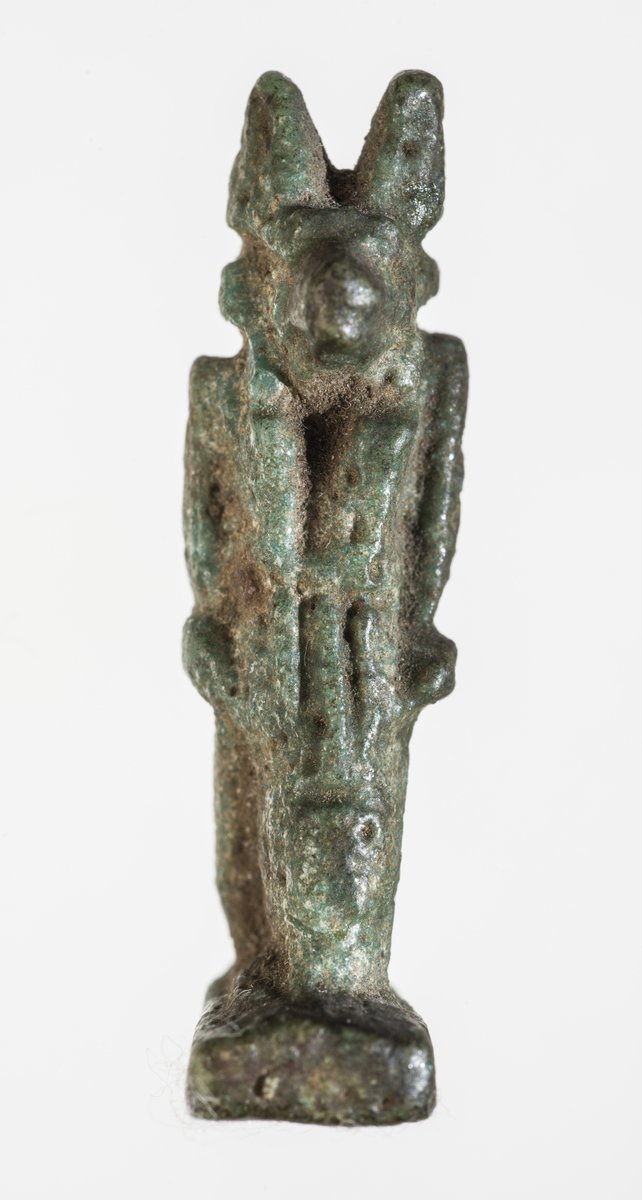
Anubis
Egyptian Art
| Place of production | Thebes, Egypt |
|---|---|
| Date | first half of the 10th century B.C.; Third Intermediate Period |
| Object type | bronze, gold and silver, lead |
| Medium, technique | Wood, paint, varnished with resin |
| Dimensions | 186 x 47.5 x 60.5 cm |
| Inventory number | 51.2095.1-2 |
| Collection | Egyptian Art |
| On view | Museum of Fine Arts, Basement Floor, Ancient Egypt, Funerary beliefs |
The coffin that was made for an unknown priestess of Amun-Re in Karnak is a characteristic piece of the Theban funerary art of the Twenty-first Dynasty, a period when the decline of a strong, central government was followed by similar tendencies in the tomb architecture. Instead of building new, individual tombs, reusing of older graves became a practice and the period witnessed the beginnings of common burials developing from family vaults. The lack of private tombs meant that coffins became the most important media for tomb decoration. All textual and pictorial information, previously available on tomb walls, were condensed on the surfaces of the new coffin type. That explains why the rather dense, horror vacui-type decoration was so preferred on these objects. The colour scheme of the female coffin is polychrome on a yellow background; the surface is varnished. The blue wig is adorned by a stylized vulture headdress flanking the face. The richly decorated wesekh-collar covers the greater part of the upper body down to the line of the hip. The hands are opened with palms turned downward, a typical iconographic feature of female coffins of the type. Below the collar, horizontal scene bands follow each other. The iconography of the lid is characterized by the dominance of winged protective gods. A different iconographic pattern of the decoration filed can be observed below the knees. The surface is divided into two symmetrical parts by a text column in the middle. On both sides, offering scenes are placed in three panels. Both sides of the coffin case are bordered by a frieze patterning uraeus-serpents. Below the frieze, scene panels follow each other separated by a single text column with continuously repeated short offering formula. The row of scenes running along the sides is strongly damaged due to ground-water. The inner side of the case is also richly decorated. The central figure of the top of the head is a ba-bird indicating that the soul of the deceased leaves the corpse through the head in the moment of death.
This record is subject to revision due to ongoing research.